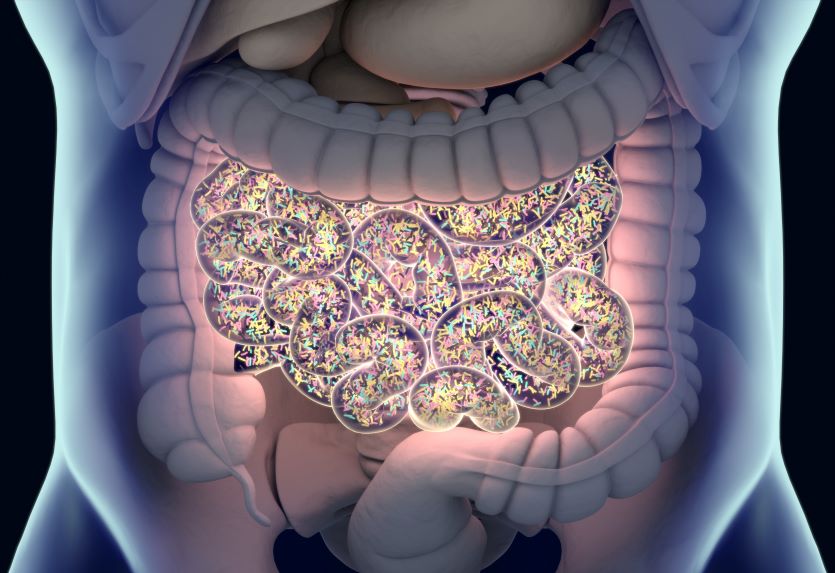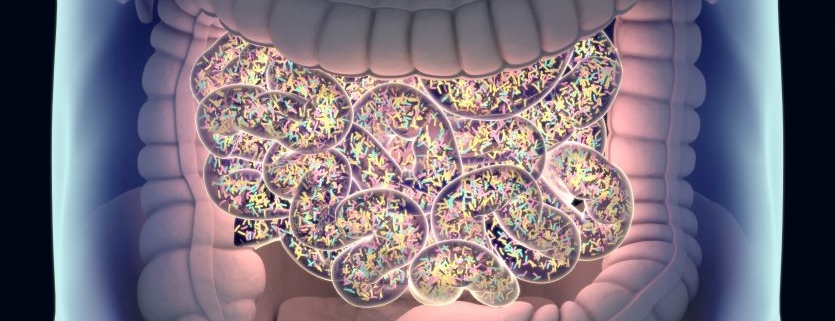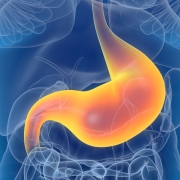Prebiotics, Probiotics, and Your Microbiome

Your body is full of bacteria, viruses, and fungi. Trillions of these tiny microbes—collectively called your microbiome—exist mainly inside your intestines, in your mouth, and on your skin. They are with you from birth. And, surprisingly, that’s a good thing.
While some bacteria and microbes are potentially harmful, others are extremely important for supporting your health. Maintaining nutritional status, immunity, and the behavior of the brain are related to a healthy balance of these microbes.
Refresh your knowledge on the microbiome with these helpful stories:
Defining Microbiome: Meet Your Bacterial Buddies
The Gut-Brain Axis: Connecting Your Brain and Microbiome
Your Gut Microbiome’s Reaction to Dietary Fiber
How Your Complex Oral Microbiome Impacts Health
Why Your Skin Microbiome is Important—And 5 Ways to Protect It
Diversity is Key and Prebiotics and Probiotics Can Help
One established characteristic of a healthy gut environment is the variety or diversity of the microbes. The more diverse your microbial community is, the more resilient it is likely to be.
When your gut is loaded with a variety of friendly bacteria, there’s less empty space for the bad kind to take up permanent residence.
Environment, genetics, and other factors have some influence on your microbiome. But your diet determines what grows best and what microorganisms win the battle for space and resources.
Common modern diets are rich in sugars, saturated fats, and processed food. They also lack fiber. This tends to select for certain bacterial species to dominate. A vegetarian or Mediterranean diet, on the other hand, includes a lot of fiber, healthy fats, and is rich in fruits, vegetables, and whole grains. Different species of bacteria are known predominate in guts of people who regularly consume these diets.
The amount of prebiotic fiber (which feeds the microbiome) and probiotic foods (which provide live bacteria) are part of these dietary calculations, too. A varied diet rich in fiber, and its positive impact on the microbiome, is an important piece of the health puzzle. It’s just one reason health professionals emphasize abundant fruits, vegetables, legumes, and whole grains in your daily diet.
Putting the Focus on Prebiotics
The most effective way to influence your gut microbiome in the right direction is to consistently include a wide variety of fiber in your diet. Probiotics is a more well-known microbiome vocabulary word, and they’re important to health. But certain fibers, known as prebiotics, are just as important.
Prebiotics essentially act as a gut fertilizer. That’s because they are certain non-digestible carbohydrates (fiber) that nourish healthy microorganisms (probiotics). For example, prebiotics like inulin support the balance of healthy bifidobacteria (important gut bacteria in mammals) in the digestive tract. If you’re going to populate your gut with a variety of healthy microbes, you need a variety of fibers and prebiotics in your diet.
Here’s where you can find them. Check out the food sources that provide healthy fiber and prebiotics to your diet:
Chicory root – inulin
Dandelion Greens – fiber
Jerusalem Artichoke – inulin
Garlic – inulin and FOS (fructooligosaccharides)
Onions – inulin and FOS
Leeks – inulin
Asparagus – inulin
Bananas – inulin and resistant starch
Barley – beta-glucans
Oats – beta-glucans and resistant starch
Apples – pectins
Konjac root – glucomannan fiber
Burdock root – inulin and FOS
Flaxseeds – gums, cellulose, and lignans
Jicama – inulin
Wheat Bran – arabinoxylan oligosaccharides (AXOS)
Probiotics Can Help Change Bacteria’s Bad Reputation
Most people are taught to watch out for spoiled food, which is generally caused by an overgrowth of unhealthy bacteria or mold. It’s a legitimate concern. But certain types of bacteria help support your health and are safe in the proper balance. They’re called probiotics—meaning “for life.”
As mentioned above, these healthy bacterial probiotics support the balance and health of the intestinal environment in several different ways. This includes providing competition, supporting immune function, and communicating through chemical signals.
It’s much more complex than that, but that’s the basic idea. If you want to dive deeper, this recent review article will give you a more complete understanding of how probiotics work.
Acquiring probiotics from your diet is a matter of choosing and incorporating certain foods into your meals. You can find them in fermented dairy foods, like yogurt, buttermilk, kefir, and some types of cheese. Fermented soy products like tempeh, miso, and natto are also excellent sources. Even vegetables get into the act with kimchi, pickles, and sauerkraut. Another popular trend is making or drinking kombucha, which is made from fermenting a mixture of tea, yeast, and sugars.
Combining probiotics and prebiotics could multiply potential benefits. Some symbiotic fermented foods do that for you. Yogurt and kefir are two examples of foods that have living bacteria and prebiotic substances to feed them.
Answers to Common Prebiotic and Probiotic Supplement Questions
Under normal circumstances, diet is the most important factor in a healthy gut environment. Everyone should prioritize a healthy, balanced diet as a lifelong practice. But that’s often easier said than done.
Sometimes life and health just doesn’t go as planned, regardless of intent. In these cases, supplemental prebiotics and probiotics can help fill gaps where the diet may come up short. Take a look at some of the common questions about these dietary additives.
Why take a probiotic or prebiotic supplement?
Many realities of life can disrupt the stability of your gut environment. A few include: stress, a nutrient-poor diet, dehydration, unhealthy sleep patterns, certain medications, and exposure to new microbes when traveling.
Instability in the gut microbiome can even be associated with the normal aging process. A change in nutritional status and lifestyle can negatively influence gut health, especially in older adults.
In these situations—where your gut health can be in flux—a probiotic or prebiotic (or both) can help support the diversity and balance of your gut microbiome. Supporting a healthy diverse microbial environment can help you maintain normal digestion, which you need to utilize and metabolize energy and nutrients. In the same way your body needs essential vitamins, minerals, and other micronutrients on a daily basis, your gut needs the right nourishment every day to operate at its best.
When it comes to dosage or colony forming units (CFU), is higher always better?
Even at billions of colonies, the amounts of bacteria added through probiotics is minuscule in the context of the entire gut environment. In other words, rather than thinking of a product containing 50 billion CFU being four-times more than 12 billion, it’s more accurate to think of it as 50 billion out of trillions, versus 12 billion out of trillions.
The dosage that’s most appropriate for you depends on your health goals and the specific probiotics included in a particular formula. For general balance and maintenance of healthy microflora, products containing five to 20 billion CFU are typical. A product containing 50-billion CFU may be needed for certain probiotic strains or health concerns. Even higher dosages are sometimes used for intensive therapy or to restore flora to an optimal balance after illness.
So total CFU counts do matter, but so do your personal needs. It’s always a good idea to consult with your healthcare practitioner to determine the best CFU number for you.
Do probiotics survive the harsh environment of the stomach?
It’s true that stomach acid destroys much of the bacteria and microbes you ingest. But not all strains are wrecked by the acidic environment of the stomach. Food poisoning wouldn’t be an issue if stomach acid was 100-percent effective.
When searching for a probiotic supplement, look for strains known to survive the acidic environment of the stomach and the body’s bile. You may find this listed on the label or in company literature. A quick search on Google may also indicate whether the strain has been tested to survive the stomach environment.
Are more strains always better than fewer strains?
Because of the diversity of the microbiome, it is easy to assume that a probiotic containing many different strains is the best option. However, existing research suggests that most often the opposite is true.
The majority of compelling research papers revealing health benefits of probiotics involve single strain and two-strain probiotics. Why? Many factors determine whether a probiotic strain will be beneficial or not, including stability, ability to survive digestion, compatibility with your microbial environment, and formulation of the probiotic product itself.
What should I look for on the label of probiotics?
All probiotics should list the genus, species, and specific strain of bacteria. For example, Bifidobacterium animalis BB-12 is listed by genus (Bifidobacterium), species (animalis), and strain (BB-12). Strains are all different and have unique characteristics, and quality probiotic supplements will designate the specific strains that are included.
When and how is it best to take probiotics and prebiotics?
There really isn’t any solid evidence that timing is important in most cases. Probiotics can be taken in the morning, noon, or night—whenever it’s best for you. There’s also debate about whether it’s better to take probiotics with a meal or on an empty stomach. Unless there are specific product instructions to the contrary, you can take them with or without food.
The recommendation is much the same for prebiotics. Consistency is the most important recommendation, so take them whenever it works best for you to take them on a daily basis. They can be taken together with probiotics, and they are often included with probiotic products and foods. But it isn’t necessary to combine them or take them together if it doesn’t work best for you.
What is the best form for a probiotic product?
The form and delivery system that is best depends on the specific microbes used, the intended purpose, and distribution of the product. Some probiotics require refrigeration to maintain viability, while others do not. Probiotics can come in capsules, powders, liquids, packets, tablets, or even in food products themselves. Stability and viability are important, so be sure to purchase probiotic products from a company or source you trust.
Who should NOT take probiotics?
Although probiotics are generally safe to use, there are reports linking probiotics to side effects in some people. The people most likely to have problems are those with compromised immunity, people who are critically ill, and those who’ve had recent surgery. If there is a question in these cases, it’s always best to consult a health professional.
Can children take probiotics?
There are various reasons a child may benefit from probiotics. Most pediatricians are familiar with probiotics so it’s best to discuss the appropriate use and dosage in children with your health professional.












